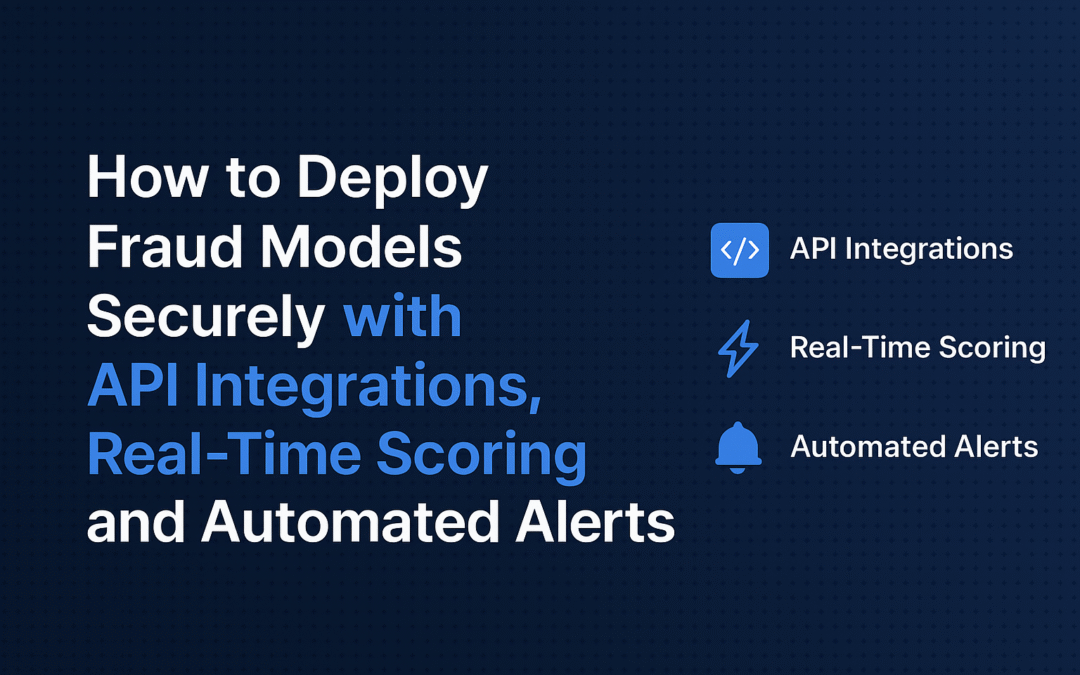So you’ve built a fraud detection model — trained it on real-world data, tuned the thresholds, evaluated its performance, and you’re confident it can spot suspicious activity. Great! But building the model is only half the battle.
Now comes the crucial step: deployment.
In this post, we’ll walk you through how to deploy fraud detection models securely, enable real-time scoring through API integration, and set up automated alerts to act quickly when fraud is detected.
Full Code with Detailed Explanation (FastAPI Example)
from fastapi import FastAPI, Request
import joblib
app = FastAPI()
model = joblib.load("fraud_model.pkl")
@app.post("/predict")
async def predict(request: Request):
data = await request.json()
features = [data['amount'], data['location'], data['device']]
prediction = model.predict([features])
return {"fraud": bool(prediction[0])}
Explanation
FastAPIhandles web server logic, whilejoblibloads your trained model.- POST endpoint
/predictreceives transaction data as JSON. - The model predicts whether the transaction is fraudulent and returns a JSON response.
Securing the Endpoint (with API Key)
from fastapi import Header, HTTPException
API_KEY = "your-secret-api-key"
@app.post("/predict")
async def predict(request: Request, x_api_key: str = Header(None)):
if x_api_key != API_KEY:
raise HTTPException(status_code=403, detail="Unauthorized")
data = await request.json()
features = [data['amount'], data['location'], data['device']]
prediction = model.predict([features])
return {"fraud": bool(prediction[0])}
This version protects the API using a simple header key. Your clients must include:
x-api-key: your-secret-api-keyExample Request and Response
Request:
{
"amount": 2500,
"location": "Delhi",
"device": "mobile"
}
Response:
{
"fraud": true
}
Automated Alert System (Bonus)
Use alerts to notify your team when risky behavior is detected. For example, send a Slack message:
import requests
def send_slack_alert(user_id, risk_score):
webhook_url = "https://hooks.slack.com/services/XXXX"
message = f"Fraud Alert: User {user_id} flagged with risk score {risk_score}"
requests.post(webhook_url, json={"text": message})
Best Practices for Security
- Always use HTTPS for all traffic.
- Enable rate limiting and IP whitelisting.
- Log requests cautiously (avoid storing raw PII).
- Rotate API keys regularly and store securely (e.g., in environment variables).
Coming Up Next: What’s Ahead in the Series
We’re just getting started! In the next post, we’ll dive deeper into:
- Production Deployment with Docker, Gunicorn, and cloud platforms.
- Fraud Score Thresholding: dynamic vs. static scoring.
- Model Retraining & Drift Monitoring.
- Real-Time Monitoring Dashboards with tools like Grafana or Kibana.
Have Questions?
Want help setting up your fraud detection system or deploying it in your environment?
Leave a comment below or reach out — we’d love to hear from you!

